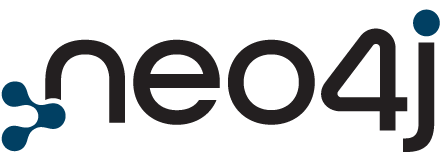DBMS > Amazon Neptune vs. ArangoDB vs. SAP SQL Anywhere
System Properties Comparison Amazon Neptune vs. ArangoDB vs. SAP SQL Anywhere
Please select another system to include it in the comparison.
| Editorial information provided by DB-Engines | ||||||||||||||||||||||||||||||||||||||||||||||||||||||||||||||||||||||||||||||||||||||||||||||||||
| Name | Amazon Neptune Xexclude from comparison | ArangoDB Xexclude from comparison | SAP SQL Anywhere | |||||||||||||||||||||||||||||||||||||||||||||||||||||||||||||||||||||||||||||||||||||||||||||||
| Description | Fast, reliable graph database built for the cloud | Native multi-model DBMS for graph, document, key/value and search. All in one engine and accessible with one query language. | RDBMS database and synchronization technologies for server, desktop, remote office, and mobile environments | |||||||||||||||||||||||||||||||||||||||||||||||||||||||||||||||||||||||||||||||||||||||||||||||
| Primary database model | Graph DBMS RDF store | Document store Graph DBMS Key-value store Search engine | Relational DBMS | |||||||||||||||||||||||||||||||||||||||||||||||||||||||||||||||||||||||||||||||||||||||||||||||
|
|
|
| |||||||||||||||||||||||||||||||||||||||||||||||||||||||||||||||||||||||||||||||||||||||||||||||
| Website | aws.amazon.com/neptune | arangodb.com | www.sap.com/products/technology-platform/sql-anywhere.html | |||||||||||||||||||||||||||||||||||||||||||||||||||||||||||||||||||||||||||||||||||||||||||||||
| Technical documentation | aws.amazon.com/neptune/developer-resources | docs.arangodb.com | help.sap.com/docs/SAP_SQL_Anywhere | |||||||||||||||||||||||||||||||||||||||||||||||||||||||||||||||||||||||||||||||||||||||||||||||
| Developer | Amazon | ArangoDB Inc. | SAP | |||||||||||||||||||||||||||||||||||||||||||||||||||||||||||||||||||||||||||||||||||||||||||||||
| Initial release | 2017 | 2012 | 1992 | |||||||||||||||||||||||||||||||||||||||||||||||||||||||||||||||||||||||||||||||||||||||||||||||
| Current release | 3.11.5, November 2023 | 17, July 2015 | ||||||||||||||||||||||||||||||||||||||||||||||||||||||||||||||||||||||||||||||||||||||||||||||||
| License | commercial | Open Source | commercial | |||||||||||||||||||||||||||||||||||||||||||||||||||||||||||||||||||||||||||||||||||||||||||||||
| Cloud-based only | yes | no | no | |||||||||||||||||||||||||||||||||||||||||||||||||||||||||||||||||||||||||||||||||||||||||||||||
| DBaaS offerings (sponsored links) Providers of DBaaS offerings, please contact us to be listed. | ||||||||||||||||||||||||||||||||||||||||||||||||||||||||||||||||||||||||||||||||||||||||||||||||||
| Implementation language | C++ | |||||||||||||||||||||||||||||||||||||||||||||||||||||||||||||||||||||||||||||||||||||||||||||||||
| Server operating systems | hosted | Linux OS X Windows | AIX HP-UX Linux OS X Solaris Windows | |||||||||||||||||||||||||||||||||||||||||||||||||||||||||||||||||||||||||||||||||||||||||||||||
| Data scheme | schema-free | schema-free | yes | |||||||||||||||||||||||||||||||||||||||||||||||||||||||||||||||||||||||||||||||||||||||||||||||
| Typing | yes | yes | yes | |||||||||||||||||||||||||||||||||||||||||||||||||||||||||||||||||||||||||||||||||||||||||||||||
| XML support | no | yes | ||||||||||||||||||||||||||||||||||||||||||||||||||||||||||||||||||||||||||||||||||||||||||||||||
| Secondary indexes | no | yes | yes | |||||||||||||||||||||||||||||||||||||||||||||||||||||||||||||||||||||||||||||||||||||||||||||||
| SQL | no | no | yes | |||||||||||||||||||||||||||||||||||||||||||||||||||||||||||||||||||||||||||||||||||||||||||||||
| APIs and other access methods | OpenCypher RDF 1.1 / SPARQL 1.1 TinkerPop Gremlin | AQL Foxx Framework Graph API (Gremlin) GraphQL query language HTTP API Java & SpringData JSON style queries VelocyPack/VelocyStream | ADO.NET HTTP API JDBC ODBC | |||||||||||||||||||||||||||||||||||||||||||||||||||||||||||||||||||||||||||||||||||||||||||||||
| Supported programming languages | C# Go Java JavaScript PHP Python Ruby Scala | C# C++ Clojure Elixir Go Java JavaScript (Node.js) PHP Python R Rust | C C# C++ Delphi Java JavaScript (Node.js) Perl PHP Python Ruby | |||||||||||||||||||||||||||||||||||||||||||||||||||||||||||||||||||||||||||||||||||||||||||||||
| Server-side scripts | no | JavaScript | yes, in C/C++, Java, .Net or Perl | |||||||||||||||||||||||||||||||||||||||||||||||||||||||||||||||||||||||||||||||||||||||||||||||
| Triggers | no | no | yes | |||||||||||||||||||||||||||||||||||||||||||||||||||||||||||||||||||||||||||||||||||||||||||||||
| Partitioning methods | none | Sharding | none | |||||||||||||||||||||||||||||||||||||||||||||||||||||||||||||||||||||||||||||||||||||||||||||||
| Replication methods | Multi-availability zones high availability, asynchronous replication for up to 15 read replicas within a single region. Global database clusters consists of a primary write DB cluster in one region, and up to five secondary read DB clusters in different regions. Each secondary region can have up to 16 reader instances. | Source-replica replication with configurable replication factor | Source-replica replication | |||||||||||||||||||||||||||||||||||||||||||||||||||||||||||||||||||||||||||||||||||||||||||||||
| MapReduce | no | no | no | |||||||||||||||||||||||||||||||||||||||||||||||||||||||||||||||||||||||||||||||||||||||||||||||
| Consistency concepts | Immediate Consistency | Eventual Consistency Immediate Consistency OneShard (highly available, fault-tolerant deployment mode with ACID semantics) | Immediate Consistency | |||||||||||||||||||||||||||||||||||||||||||||||||||||||||||||||||||||||||||||||||||||||||||||||
| Foreign keys | yes | yes | yes | |||||||||||||||||||||||||||||||||||||||||||||||||||||||||||||||||||||||||||||||||||||||||||||||
| Transaction concepts | ACID | ACID | ACID | |||||||||||||||||||||||||||||||||||||||||||||||||||||||||||||||||||||||||||||||||||||||||||||||
| Concurrency | yes | yes | yes | |||||||||||||||||||||||||||||||||||||||||||||||||||||||||||||||||||||||||||||||||||||||||||||||
| Durability | yes | yes | yes | |||||||||||||||||||||||||||||||||||||||||||||||||||||||||||||||||||||||||||||||||||||||||||||||
| In-memory capabilities | yes | |||||||||||||||||||||||||||||||||||||||||||||||||||||||||||||||||||||||||||||||||||||||||||||||||
| User concepts | Access rights for users and roles can be defined via the AWS Identity and Access Management (IAM) | yes | fine grained access rights according to SQL-standard | |||||||||||||||||||||||||||||||||||||||||||||||||||||||||||||||||||||||||||||||||||||||||||||||
More information provided by the system vendorWe invite representatives of system vendors to contact us for updating and extending the system information, | ||||||||||||||||||||||||||||||||||||||||||||||||||||||||||||||||||||||||||||||||||||||||||||||||||
Related products and servicesWe invite representatives of vendors of related products to contact us for presenting information about their offerings here. | ||||||||||||||||||||||||||||||||||||||||||||||||||||||||||||||||||||||||||||||||||||||||||||||||||
| More resources | ||||||||||||||||||||||||||||||||||||||||||||||||||||||||||||||||||||||||||||||||||||||||||||||||||
| Amazon Neptune | ArangoDB | SAP SQL Anywhere | ||||||||||||||||||||||||||||||||||||||||||||||||||||||||||||||||||||||||||||||||||||||||||||||||
| DB-Engines blog posts | The Weight of Relational Databases: Time for Multi-Model? | |||||||||||||||||||||||||||||||||||||||||||||||||||||||||||||||||||||||||||||||||||||||||||||||||
| Recent citations in the news | Zupee implements Amazon Neptune to detect Wallet transaction anomalies in real time Use Amazon Neptune Analytics to analyze relationships in your data faster, Part 1: Introducing Parquet and CSV import and export Using generative AI and Amazon Bedrock to generate SPARQL queries to discover protein functional information with UniProtKB and Amazon Neptune | Amazon Web Services Introducing the GraphRAG Toolkit How Coinbase provides trustworthy financial experiences through real-time user clustering with Amazon Neptune provided by Google News | (PDF) A Benchmark for Performance Evaluation of a Multi-Model Database vs. Polyglot Persistence ArangoDB raises $10 million for NoSQL database management Graph, machine learning, hype, and beyond: ArangoDB open source multi-model database releases version 3.7 ArangoDB advances graph database fortunes with new funding Here's the pitch deck a German software startup used to raise $10 million to move to San Francisco and take on Oracle provided by Google News | SAP Products & Services Data Portfolio Rimini Street expands support beyond SAP and Oracle - Sap Hybris Now Integrated With Office 365, Sharepoint, Azure, and 100+ via Layer2 Cloud Connector Securing SAP with AWS Network Firewall: Part 2 – Managed Rules Data Integration Tools – Market Study provided by Google News | |||||||||||||||||||||||||||||||||||||||||||||||||||||||||||||||||||||||||||||||||||||||||||||||
Share this page




